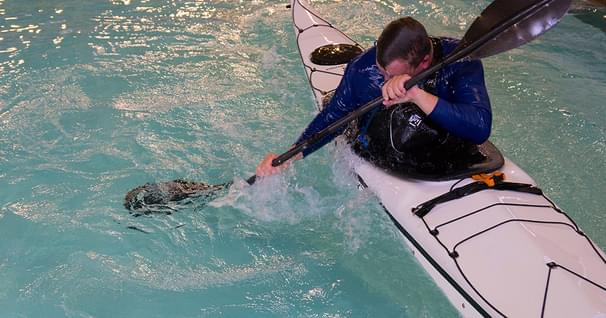SUP Surfing for Beginners
This short video looks at a few key tips that will help you enjoy your time in the surf more quickly and safely.
Although most stand up paddlers will stick to flat water lakes and rivers, the sport actually originated in Hawaii as an off shoot of traditional surfing. Starting from a standing position and having the power of a paddle makes it easier to catch waves, but surfing in SUP has it's own unique challenges and skills to develop in order to become proficient. So we're going to look at a few key tips that will help you enjoy your time in the surf more quickly and safely.
Safety
First, an important note about safety. Surfing is one of the few places where life jackets are not required. Of course, this means that you should be a very comfortable swimmer, aware of the surf conditions, and never surf alone. Remember that the Coast Guard recommends that you always wear a life jacket, and it will be required when you're outside the surf zone. Leashes are extremely important when you're surfing so that you don't get separated from your board, and it's also important to use the right type of leash to best maintain control of your board and avoid injury. In particular, your leash should be about the same length as your board, and you're gonna wanna have a straight leash instead of a coiled leash because a straight leash will have less recoil in the event that you do fall off so the board won't come back and hit you, and also, a coiled leash tends to get tangled around your paddle when you do fall off. It's also important that you attach the leash to the ankle of whichever leg is closest to the tail when you're in a surfing stance.
Practice
When it comes to the surfing itself, until you're a competent surfer, you need to practice in areas without other surfers, swimmers, or waders close by because an out of control board can really hurt someone. The ideal place to learn to surf is an open, sandy beach with small, one to two foot waves that break slowly out from shore and don't just dump on the beach. It's also ideal to have a spot that gets light, off shore winds which means the wind is blowing from the land towards the water. This keeps the waves smooth and predictable.
So now that you've found the right spot, there are gonna be three distinct challenges for learning to surf when you're stand up paddle boarding:
- The first challenge is launching and paddling past the breaking waves.
- The second is learning to catch the wave.
- The third is actually surfing the wave.
In this video we're gonna stay focused on the basics of how to actually catch and surf a wave.
Position and Committing
The key to catching a wave is first being in the right position, and second committing to the wave you select. When waiting for waves, it's best to line up parallel to the incoming sets, standing in a hybrid stance with your toes facing out towards the ocean and your paddle on the toe side of the board. When you see the wave you want, you can then easily turn 90 degrees so that you're perpendicular to the oncoming wave. When the wave gets close, take some smooth but solid forward strokes to get up to speed. If you timed it right, after about four or five strokes, the waves should reach you and start to pick up the tail of your board. At this point, it's crucial that you lean forward to get established on the face of the wave, and then once you're sure you caught the wave, you'll step back and turn your feet into a full surf stance.
Board Positioning
Now that you've caught the wave, your board is gonna wanna shoot straight down the wave out in front of it, and there you're gonna stall and lose your speed. Instead, try to angle your board on the wave so that you stay in the pocket. The pocket is the spot on the wave where the breaking part of the wave meets the open green face. Most beginner riders find it easiest to angle their board so that they face the wave with their toes and hold the paddle on the toe side of the board. This may sound and look easy enough, but make no mistake: surfing is one of the most challenging sports to learn. So be patient and accept the fact that you're gonna do a lot of swimming before you do much surfing.
~Shop Grey Duck SUP~
We make being on the water more fun, accessible, and enjoyable. Come with us on this journey, you won’t be disappointed.
Related Articles
Mention “pool session” and the first image that pops into most kayakers minds is a class in how to roll.…
Paddling alone is a recipe for danger. Bring a buddy and stay safe on the water.
The following is an excerpt from World Champion, Ken Whiting's new book, "Rolling a Kayak" …




